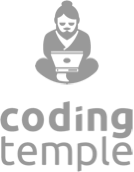Unit 1: Introduction to Elements and Compounds
- Unit 1: Introduction to Elements and Compounds
- Unit 2: Chemical Bonds
- Unit 3: Ionic Compounds
- Unit 4: Molecular Compounds
- Unit 5: Chemical Formulas
- Unit 6: Representing Molecules
- Unit 7: Monatomic and Polyatomic Ions
- Unit 8: Chemical Nomenclature
- Unit 9: Hydrated Ionic Compounds
- Unit 10: Percentage Composition and Empirical Formulas
- Unit 11: Combustion Analysis
- Unit 12: Organic Compounds and Hydrocarbons
- Unit 13: Functional Groups in Organic Chemistry
- Unit 14: Advanced Nomenclature of Organic Compounds
- Unit 1: Introduction to Elements and CompoundsReview Assignment
- Unit 2: Chemical BondsReview Assignment
- Unit 3: Ionic CompoundsReview Assignment
- Unit 4: Molecular CompoundsReview Assignment
- Unit 5: Chemical FormulasReview Assignment
- Unit 6: Representing MoleculesReview Assignment
- Unit 7: Monatomic and Polyatomic IonsReview Assignment
- Unit 8: Chemical NomenclatureReview Assignment
- Unit 9: Hydrated Ionic CompoundsReview Assignment
- Unit 10: Percentage Composition and Empirical FormulasReview Assignment
- Unit 11: Combustion AnalysisReview Assignment
- Unit 12: Organic Compounds and HydrocarbonsReview Assignment
- Unit 13: Functional Groups in Organic ChemistryReview Assignment
- Unit 14: Advanced Nomenclature of Organic CompoundsReview Assignment


























